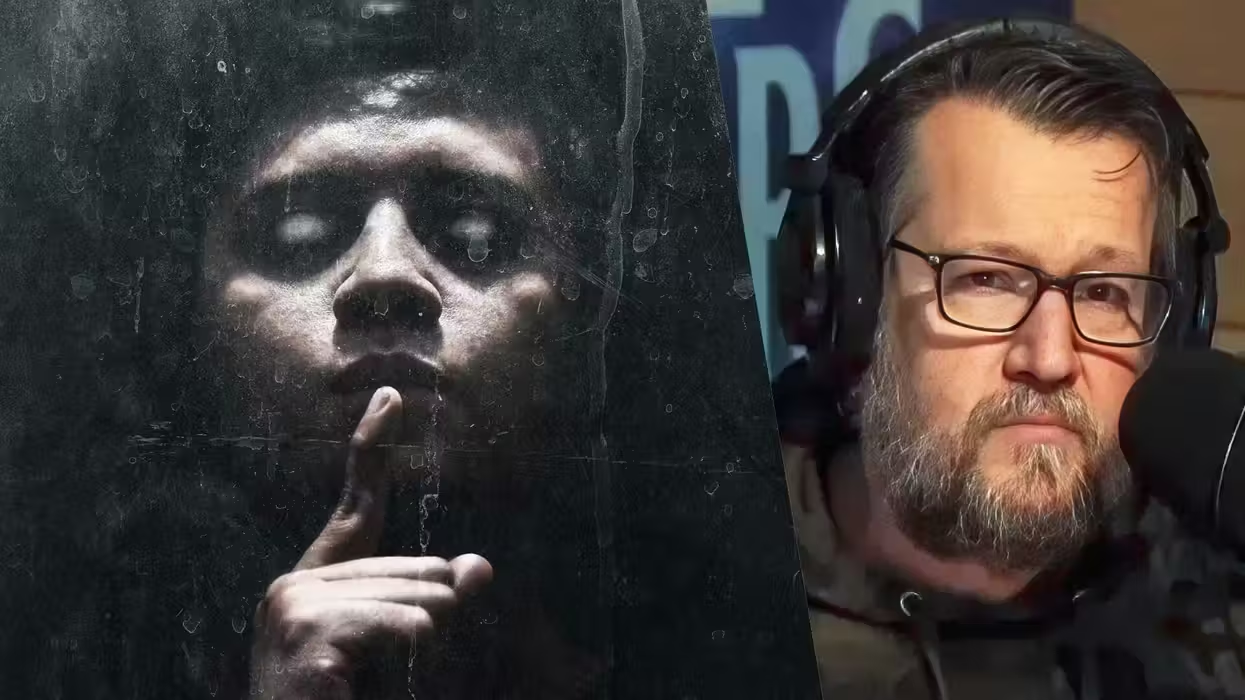
© 2025 Blaze Media LLC. All rights reserved.
Chilling: Why An Underreported Incident of Domestic Terrorism Might Not Be a Failed Attack at All
April 02, 2014
"If it was a terrorist attack, the electric power industry and the media are almost certainly in error to describe it as a 'failed attack.'"
- On April 16, 2013 six men launched an attack on a critical power station in California.
- The attack consisted of hundreds of AK-47 rounds being unleashed on 10 large transformers -- and it was first called "vandalism."
- But the former chairman of the Federal Energy Regulatory Commission calls it "the most significant incident of domestic terrorism involving the grid that has ever occurred."
- It has largely gone unreported, although TheBlaze did cover it last December.
- Dr. Peter Vincent Pry tells TheBlaze, "If it was a terrorist attack, the electric power industry and the media are almost certainly in error to describe it as a 'failed attack.'"
- Former CIA director James Woolsey adds, "Without electricity we aren't a civilization, and this is a major societal vulnerability."
—
One week ago, a former chairman of the Federal Energy Regulatory Commission told the Wall Street Journal that the sabotage of a California transformer substation was "the most significant incident of domestic terrorism involving the grid that has ever occurred." The words of warning ignited a flurry of news reports across the nation about the potential terrorism dry run.
The shocking details of the event -- in the middle of the night, six men fired hundreds of AK-47 rounds at critical energy grid components after purposely disabling emergency call systems -- rightly piqued the collective curiosity.
But the concerned coverage is dangerously delayed. While TheBlaze reported on it last December, only last week did the brazen Silicon Valley attack gain more attention because of the Journal story -- nearly 10 months later.
 Image source: Wall Street Journal
Image source: Wall Street Journal
The lag in attention could be linked to the initial assessment by the Santa Clara County Sheriff's department and Pacific Gas & Electric, which owns the station that was attacked near San Jose. According to the sheriff's press release and a PG&E spokesman, both the local law enforcement agency and the company dubbed the act "vandalism."
"[Vandalism] is how we typically categorize incidents where other people damage our facilities," PG&E spokesman Brian Swanson told TheBlaze. "We are required to submit a report right after an incident, and with limited information that's how we categorized it."
When then-Federal Energy Regulatory Commission Chairman Jon Wellinghoff heard about the attack on the Metcalf substation, he flew to Silicon Valley to assess the situation, not just with energy grid experts, but with criminal experts, according to the Wall Street Journal:
"He flew to California, bringing with him experts from the U.S. Navy's Dahlgren Surface Warfare Center in Virginia, which trains Navy SEALs. After walking the site with PG&E officials and FBI agents, Mr. Wellinghoff said, the military experts told him it looked like a professional job.[sharequote align="right"]"[An] error to describe it as a 'failed attack.'"[/sharequote]
In addition to fingerprint-free shell casings, they pointed out small piles of rocks, which they said could have been left by an advance scout to tell the attackers where to get the best shots.
"They said it was a targeting package just like they would put together for an attack," Mr. Wellinghoff said.
Retired PG&E Vice President of Transmission Mark Johnson agreed with Wellinghoff's assessment.
"This wasn't an incident where Billy-Bob and Joe decided, after a few brewskis, to come in and shoot up a substation," Johnson said during a utility security conference, according to the Journal. "This was an event that was well thought out, well planned and they targeted certain components."
 One of the substations damaged on April 16, 2013, seen here leaking fluid after bullets punctured coolant lines. (Image via KTVU-TV).
One of the substations damaged on April 16, 2013, seen here leaking fluid after bullets punctured coolant lines. (Image via KTVU-TV).
The incident happened around 1 a.m. on April 16, 2013. A suspect broke into an underground vault not far from a busy freeway and cut AT&T telephone cables that enabled security response for the substation. Within half an hour, snipers opened fire on the electric grid components.
Shooting for 19 minutes, they surgically knocked out 10 transformers — the size of double-decker buses — that funnel power to Silicon Valley. Just seconds before a police car arrived, the shooters disappeared into the night, according to the Wall Street Journal.
Wellinghoff is just one energy expert who has been sounding the alarm on grid vulnerability, from both physical and electromagnetic threats. Former CIA Director James Woolsey said while experts on the threat have been warning of potential terror attacks on the electric grid for years, many people just choose to ignore it.
[sharequote align="center"]"People have an almost infinite capacity for not wanting to think about ugly things."[/sharequote]
"People have an almost infinite capacity for not wanting to think about ugly things, and the utilities and companies who could be affected have demonstrated and extraordinary capacity of ostrich-like behavior," Woolsey told TheBlaze.
"It's not as if society isn't paying attention ... there has been a lot of concern about the electric grid from cyber threats and people are already somewhat worried about it and this is a new dimension — at least new in the sense of public attention — which was almost nonexistent up until about a week ago," Woolsey said.
Blaze readers, however, had the inside scoop on this threat thanks to the article published Dec. 28, which raised the issue of whether the attack was a terrorist "dry run." And now several months after the serious incident, it seems the vulnerabilities are sinking in.
Dr. Peter Vincent Pry, who served on the Congressional Electromagnetic Pulse Commission, which was charged with studying all EMP threats that could threaten the American way of life, said calling the California event a "dry run" is spot-on.
"If it was a terrorist attack, the electric power industry and the media are almost certainly in error to describe it as a 'failed attack,'" he told TheBlaze."
"In military and terrorist operational planning, an exercise or dry run deliberately stops short of destroying the target or achieving the maximum outcome because you do not want to alert the adversary," Pry said. "You want the victim to remain vulnerable to a surprise all-out attack, most likely a much larger and more ambitious attack."
Swanson said PG&E will improve its security by deploying advanced camera systems, enhanced lighting and additional alarms at the substation in San Jose that was attacked, as well as others. He said the utility is considering a rate increase to pay for the security enhancements.
[sharequote align="left"]"In military and terrorist operational planning, an exercise or dry run deliberately stops short of destroying the target … you want the victim to remain vulnerable to a surprise all-out attack."[/sharequote]
Rep. Trent Franks (R-Ariz.) insists a change in the way electric companies work with the federal government to improve their systems could save taxpayers from bearing unnecessary costs for insufficient physical and electromagnetic threat solutions and improve reliability.
"This event highlights the threat posed by an unsecured electric grid. Had the perpetrators been using weapons far more powerful than an AK-47, the transformers might have arced over under [the] load and been permanently disabled," Franks, a former engineer, told TheBlaze. "A major EMP could have the same effect, resulting in longterm damage to the civilian electric grid."
Because the military is 99 percent reliant upon the civilian energy grid transformers exactly like the one attacked in California, Franks has introduced legislation supported by Pry, Woolsey and others called the SHIELD Act, which would address current shortcomings in the electric grid.
"Without electricity we aren't a civilization, and this is a major societal vulnerability," Woolsey told TheBlaze.
The former CIA director laughed heartily as he described the way a terrorist threat to America is identified: "So many people lecture me ... about how this is not an officially sanctioned threat ... as if what matters is whether a government bureaucracy has made a finding or not when somebody steps out next to a transformer farm and blasts away with an AK-47."
--
Follow Elizabeth Kreft (@elizabethakreft) on Twitter.
Want to leave a tip?
We answer to you. Help keep our content free of advertisers and big tech censorship by leaving a tip today.
Want to join the conversation?
Already a subscriber?
more stories
Sign up for the Blaze newsletter
By signing up, you agree to our Privacy Policy and Terms of Use, and agree to receive content that may sometimes include advertisements. You may opt out at any time.
Related Content
© 2025 Blaze Media LLC. All rights reserved.
Get the stories that matter most delivered directly to your inbox.
By signing up, you agree to our Privacy Policy and Terms of Use, and agree to receive content that may sometimes include advertisements. You may opt out at any time.






